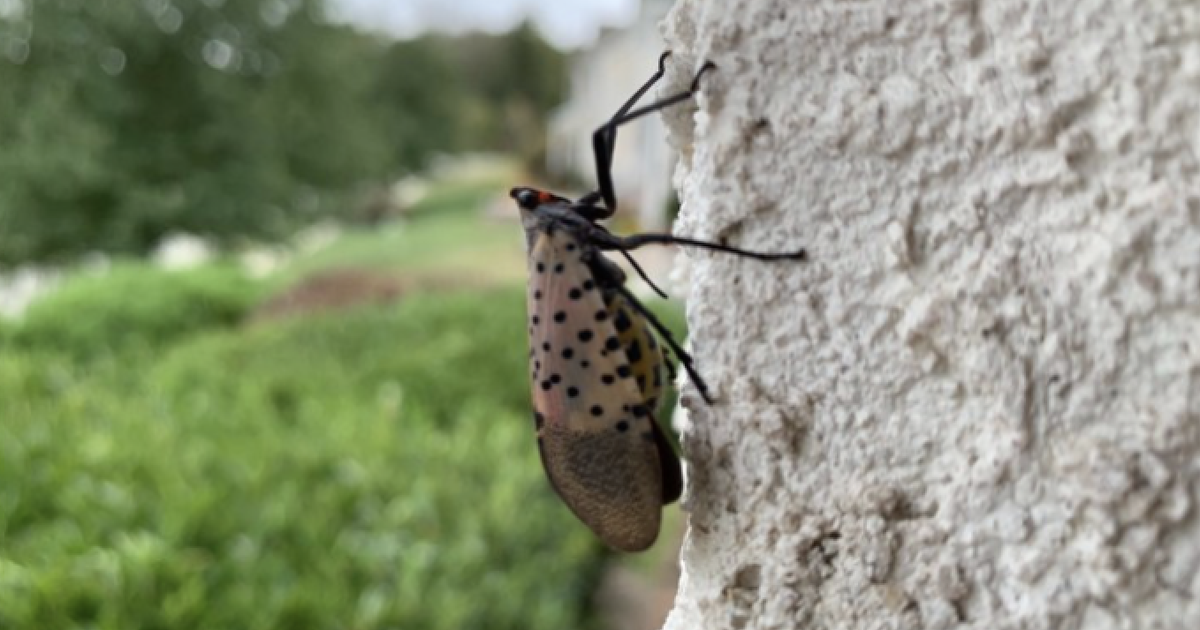Copyright phillyvoice

To avoid becoming a snack for birds, spotted lanternflies appear to store a bitter and foul-smelling toxin in their bodies that makes them less appetizing to would-be predators, new research from Penn State University shows. The invasive insects, which are wreaking havoc on crops and trees as they expand their territory in the U.S., have posed challenges to agriculture departments and wildlife experts on the hunt for remedies to the destruction they cause. Among other avenues of study, Penn State researchers have sought to understand whether spotted lanternflies have any natural predators who can keep their populations in check. MORE: Cape May County zoo announces birth of baby capybaras — with more on the way The defensive toxin in spotted lanternflies likely comes from compounds found in the tree of heaven, their preferred host. When the insects are deprived of the chance to feed on sap from their favorite tree, some birds seem more eager to eat them. "Like the spotted lanternfly, tree of heaven is an invasive species that originated in the same region of Asia as the insect," said Anne Johnson, a researcher in Penn State's entomology department. "We found that birds, including nesting house wrens, preferred to eat spotted lanternflies that had not fed on tree of heaven, suggesting that the insects that consume this plant are less tasty, thereby providing some chemical defenses against avian predators." Spotted lanternflies appeared in the U.S. in Berks County in 2014 and have spread to at least 19 states. For several years, Johnson has been studying how bird species react to spotted lanternflies. She documented some of her findings on a Facebook page called Birds Eating Bad Bugs, where she solicited public observations of birds eating spotted lanternflies. To test her theory about tree of heaven giving the insects a natural defense, researchers reared different life stages of spotted lanternflies in controlled environments, giving some access to tree of heaven and depriving others. They found the lanternflies that fed on tree of heaven had accumulated toxins — called quassinoids — that reached the highest concentrations in adults. To gauge the preferences of birds, the researchers put pieces of the spotted lanternflies into suet cakes — high-energy food sources for wild birds in the winter. Some suet cakes had lanternflies that had fed on tree of heaven; others had lanternflies that did not. The suet cakes were placed in nest boxes where researchers could observe the feeding habits of house wrens, woodpeckers, black-capped chickadees, white-breasted nuthatches and other species. Most of the birds preferred suet cakes with spotted lanternflies that had not fed on tree of heaven. House wrens specifically went out of their way to mostly feed their young with lanternflies that did not feast on tree of heaven. "The parents often ate both spotted lanternflies reared with and without access to tree of heaven but only fed their chicks nymphs reared without access to the tree of heaven," Johnson said. "This could indicate that parent birds were less willing to tolerate quassinoids in spotted lanternfly prey for their offspring than they were for themselves." The researchers also found the eggs of spotted lanternflies contain the same toxin derived from the tree of heaven. Researchers believe the offspring inherit the toxin from their mothers, giving them generational protection. The study was supported by grants from the U.S. Department of Agriculture and the Pennsylvania Department of Agriculture. It appears in the October edition of the Journal of Chemical Ecology. As researchers look to contain spotted lanternflies, one of their most promising studies involves conducting experiments to see whether introducing parasitic wasps from China can safely curb populations without impacting other native species. That method — called biological control — usually takes years of research before a new species is released into the wild. The Philadelphia region was overrun with spotted lanternflies during the COVID-19 pandemic, but the plant-hopping insects haven't been as visible in recent years. They've largely moved to territories where food supplies have not been depleted by past infestations. Late fall and early winter is when it's crucial to scrape spotted lanternfly egg masses from trees to keep their numbers down when the insects hatch in the spring. Julie Urban, one of Johnson's colleagues at Penn State, predicts the Philly area will get another big wave of spotted lanternflies at some point in the future. "If you think of that initial infestation as a donut moving out, or a wave, there's a natural expansion out from those core areas," Urban told PhillyVoice in July. "You're going to see fluctuation over the years."



